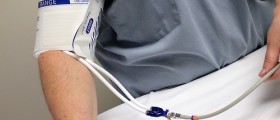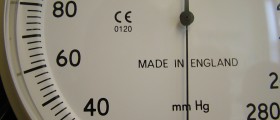PAH
Pulmonary hypertension or pulmonary artery hypertension or PAH is one of the types of high blood pressure, which is characteristic only for the arteries in the lungs and the right side of the heart.
Types of pulmonary hypertension and the main symptoms
There are two types of pulmonary hypertension - idiopathic pulmonary hypertension and secondary pulmonary hypertension. The causes of idiopathic pulmonary hypertension are not known, while the causes of secondary pulmonary hypertension are some other medical conditions that lead to high blood pressure in the lungs. Pulmonary hypertension can be mild, moderate, and severe.
The most frequent symptom is dyspnea or shortness of breath. Furthermore, fatigue, dizziness, and syncope are also some of the signs of this disease. The person who suffers from this illness can have heart palpitations and pain in the chest, but cyanosis can also appear as a symptom. Moreover, swelling in the ankles and legs, also called edema, and swelling in the abdomen, usually called ascites, are symptoms that are also frequent for pulmonary hypertension.

Cough and lethargy can also happen, as well as angina and hypoxia. Pulmonary hypertension is a very serious and incurable disease, and can be even fatal if it is not treated on time. Complementary and alternative therapies, along with medical treatment, are very effective in alleviating the symptoms of pulmonary hypertension.
Nutrition
Coenzyme Q10, taurine, and magnesium are very helpful for the lowering of high blood pressure and good health of the heart. L-carnitine makes the heart stronger, while vitamin E and vitamin C are very good because they make the immune system stronger and protect the heart. Furthermore, potassium is used to help the heart to work efficiently and to contract easily.
Herbal remedies
It is very important to consult the doctor to diagnose the problem and then opt for some of the herbal remedies. Herbs can be consumed as a dried extract, in the forms of teas, capsules, or powders, or as glycerites or as tinctures. The most common and helpful herbs that are used in the treatment of pulmonary hypertension are hawthorn, linden, and garlic, as well as rosemary and danshen.
Hawthorn is an herb for which it is stated that is very effective in alleviating the symptoms of heart failure. Garlic, 600 – 900g of it each day is beneficial for the lowering of high blood pressure, but garlic must not be used with warfarin, an anticoagulant.
One or two tea cups of linden a day, or one teacup of rosemary three times a day is very effective in helping the body to eliminate excessive fluid. However, neither linden nor rosemary must be used along with diuretics. Danshen must not be taken with anticoagulants, because this herb is very good for dilating blood vessels.
- Traditional herbal medicine (THM), mainly sourced from Traditional Chinese medicine (TCM), Ayurveda, and Japanese and Kampo medicine, were used to fight various diseases as early as 5,000 years ago. According to statistics, more than 80% of the population in developing countries rely on THM for basic medical care.
- As a natural combination medicine, multi-component THM have been shown to synergistically delay or hinder the occurrence and development of PAH. Based on the dialectical concept, THM approaches are fundamentally different from that of Western medicines in PAH diagnosis and treatment.
- There is accumulating evidence for the potential benefits of active THM components in the treatment of PAH. They were reported with clear pharmacodynamic and pharmacokinetic efficacy and working mechanisms. These components under preclinical studies are classified into the following categories: flavonoids, alkaloids, glycosides, phenolic acids, polysaccharides, terpenes, and volatile oil compounds.
- There are many challenges and difficulties in conducting clinical trials for THM. First, the material basis of THM is less clear, making the settings of exposure-response and toxic-effect studies more complex. Secondly, there are obvious differences between experimental rodent models and patients in PAH disease development. In addition, the patient’s medication compliance should be taken into account in the clinical trials.
- The advantage of THM in treating cardiovascular diseases and chronic diseases such as bronchitis, pulmonary fibrosis, and immune disorders is convincing since it is less likely to cause drug resistance and has lesser side effects. Notably, the safety evaluation of THM-derived active ingredients is also essential.








_f_280x120.jpg)








Your thoughts on this
Loading...